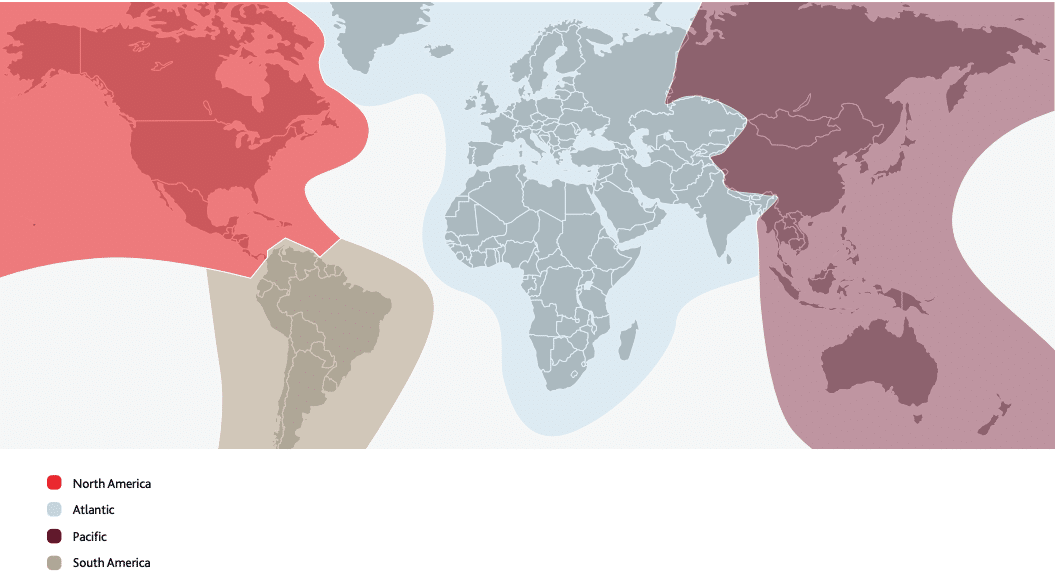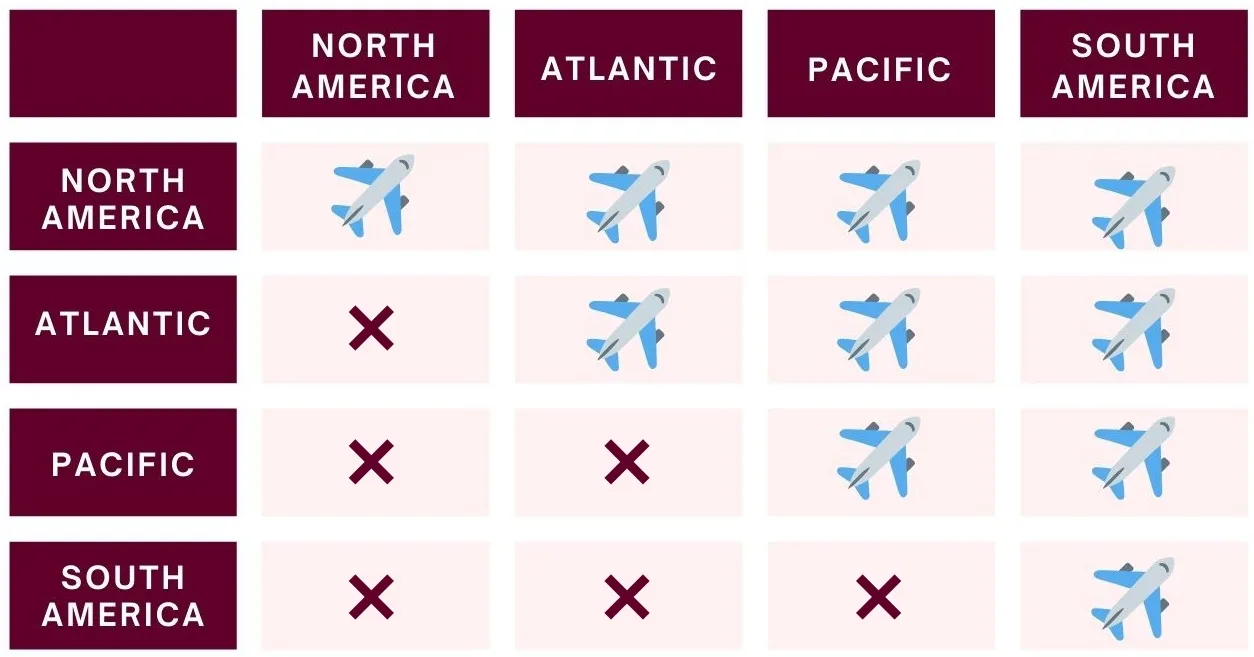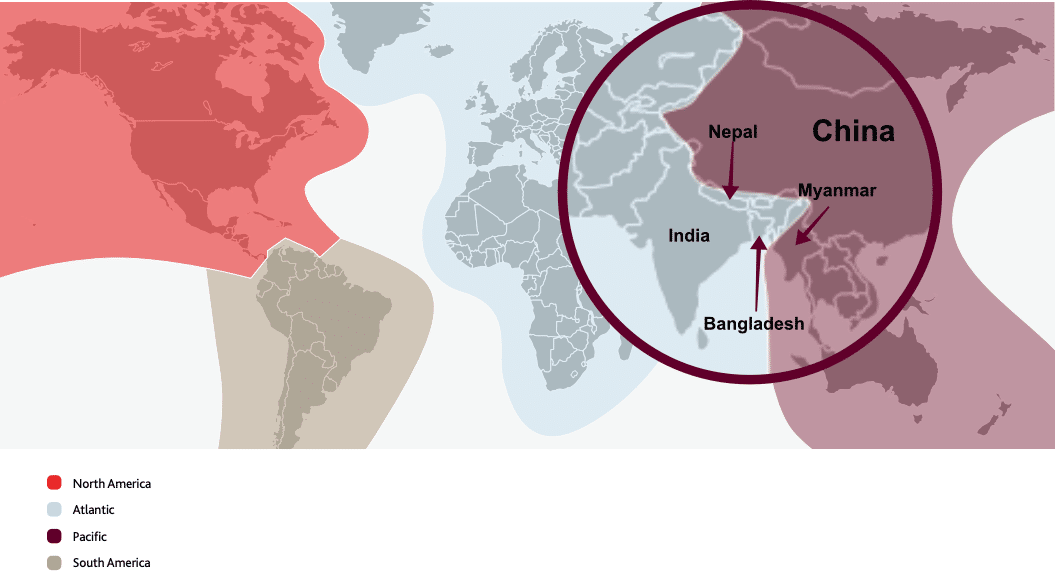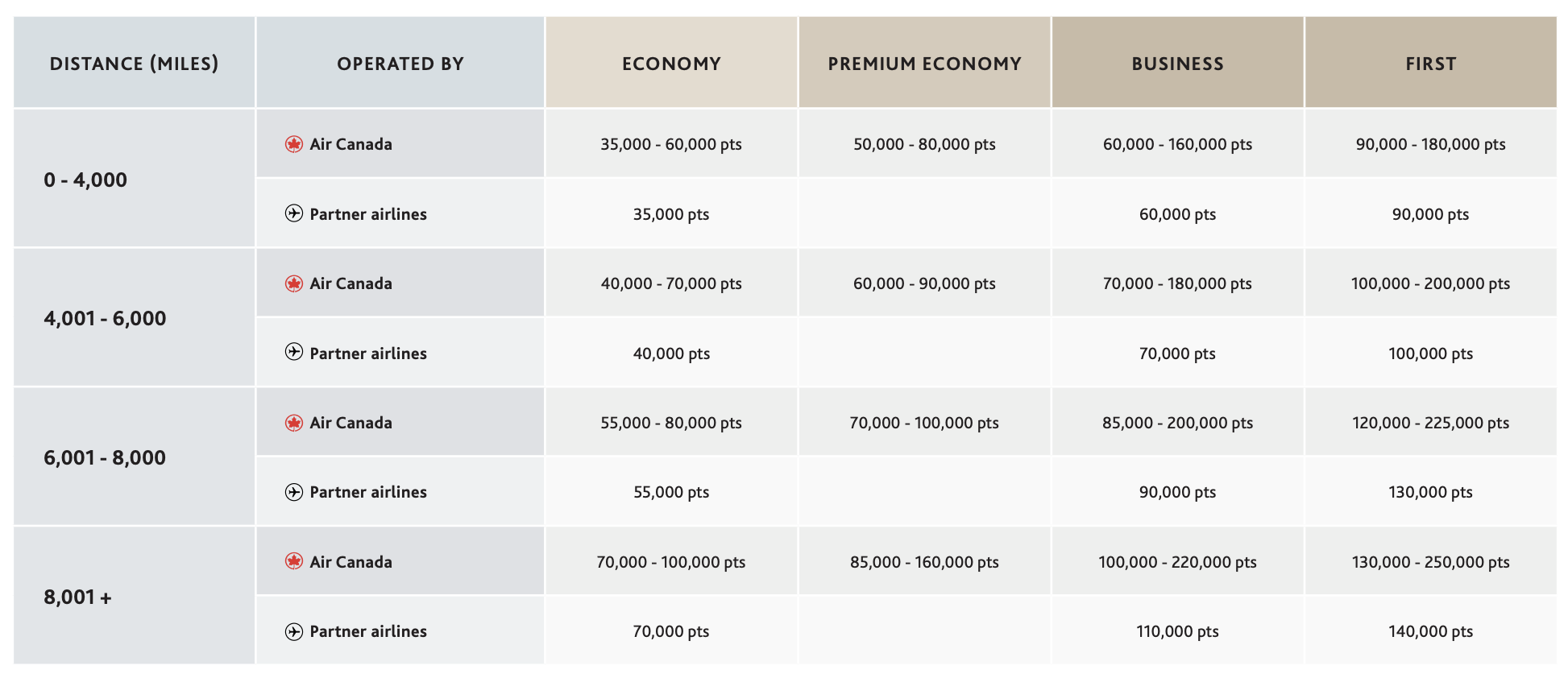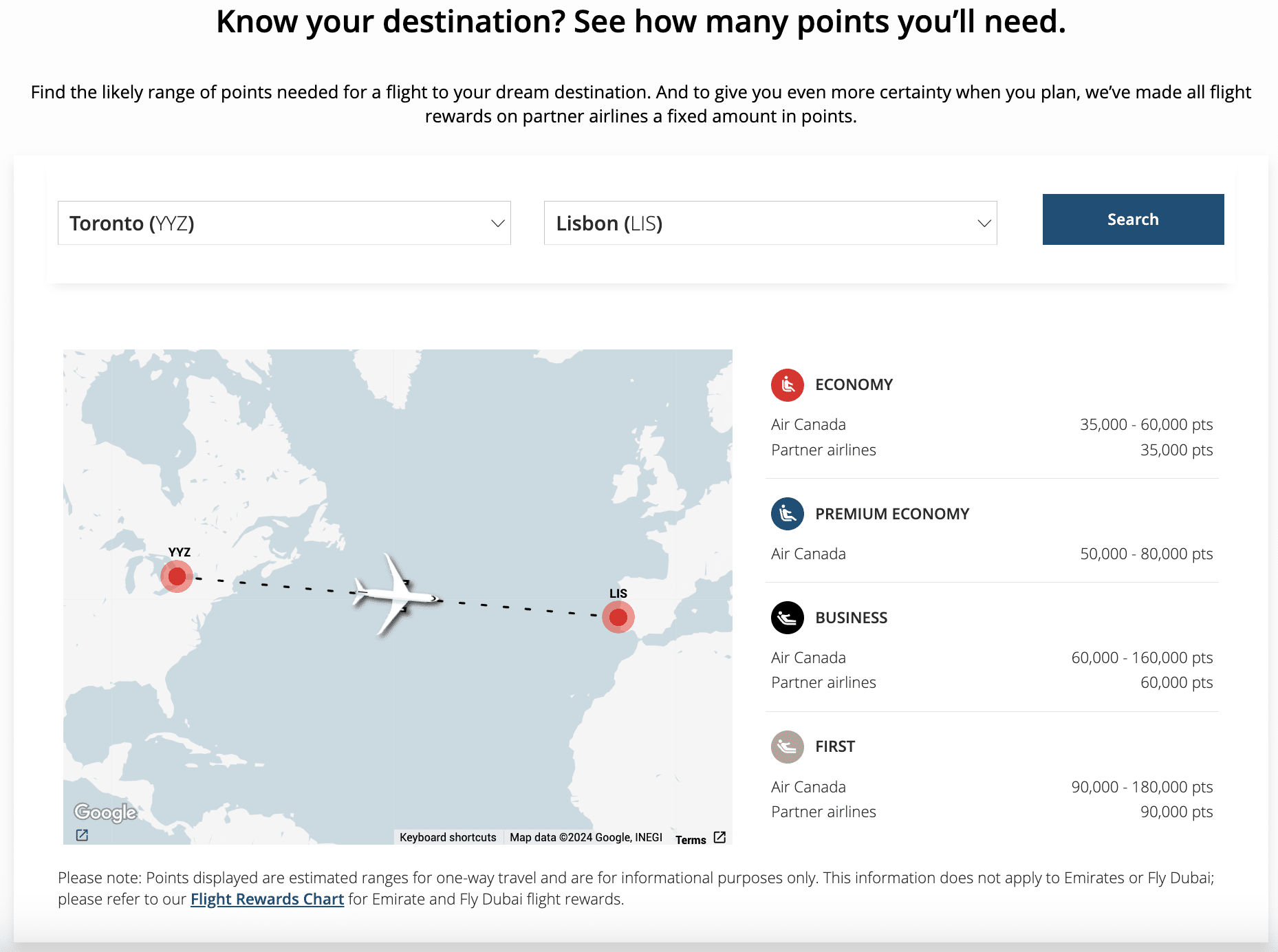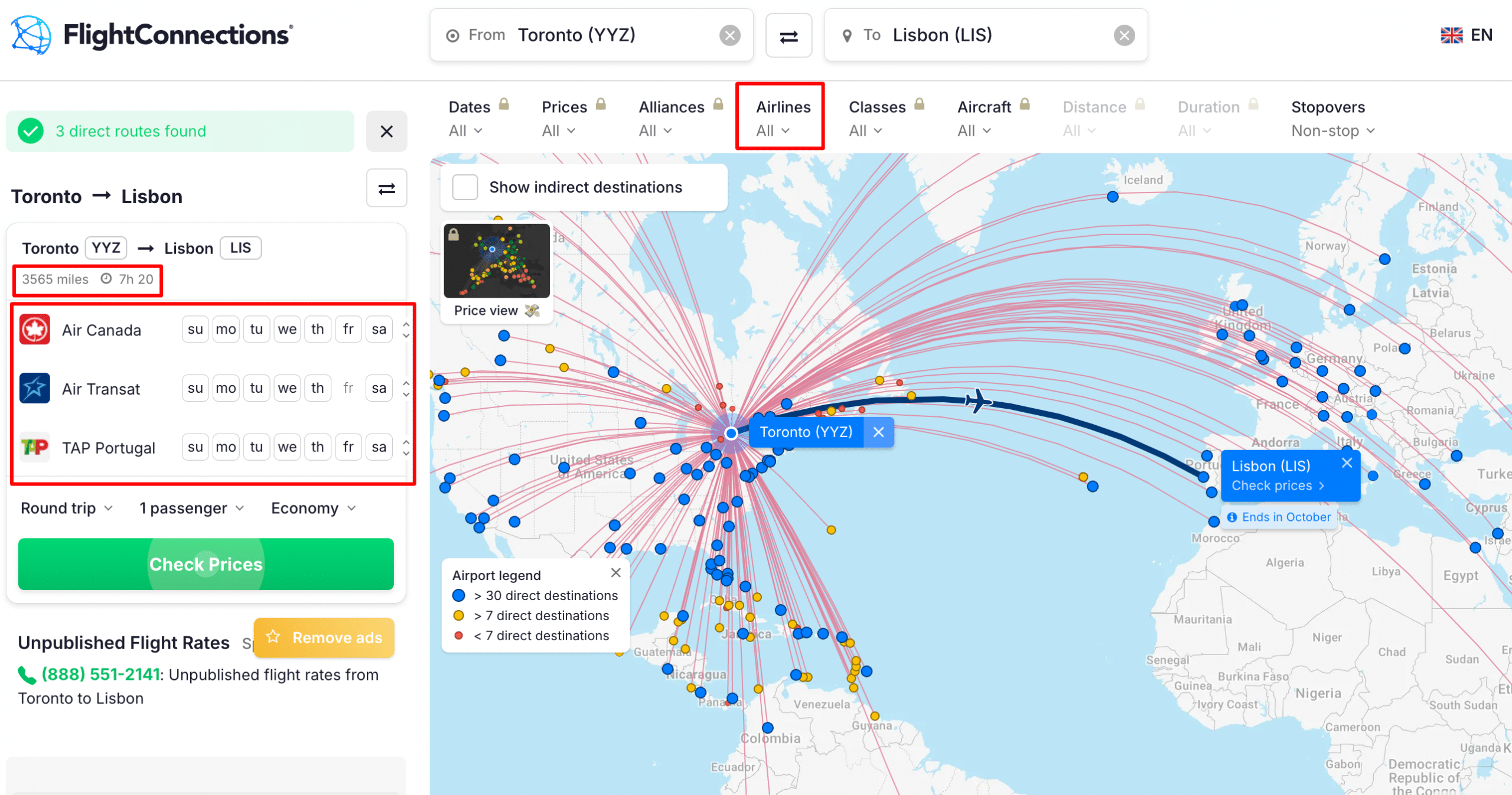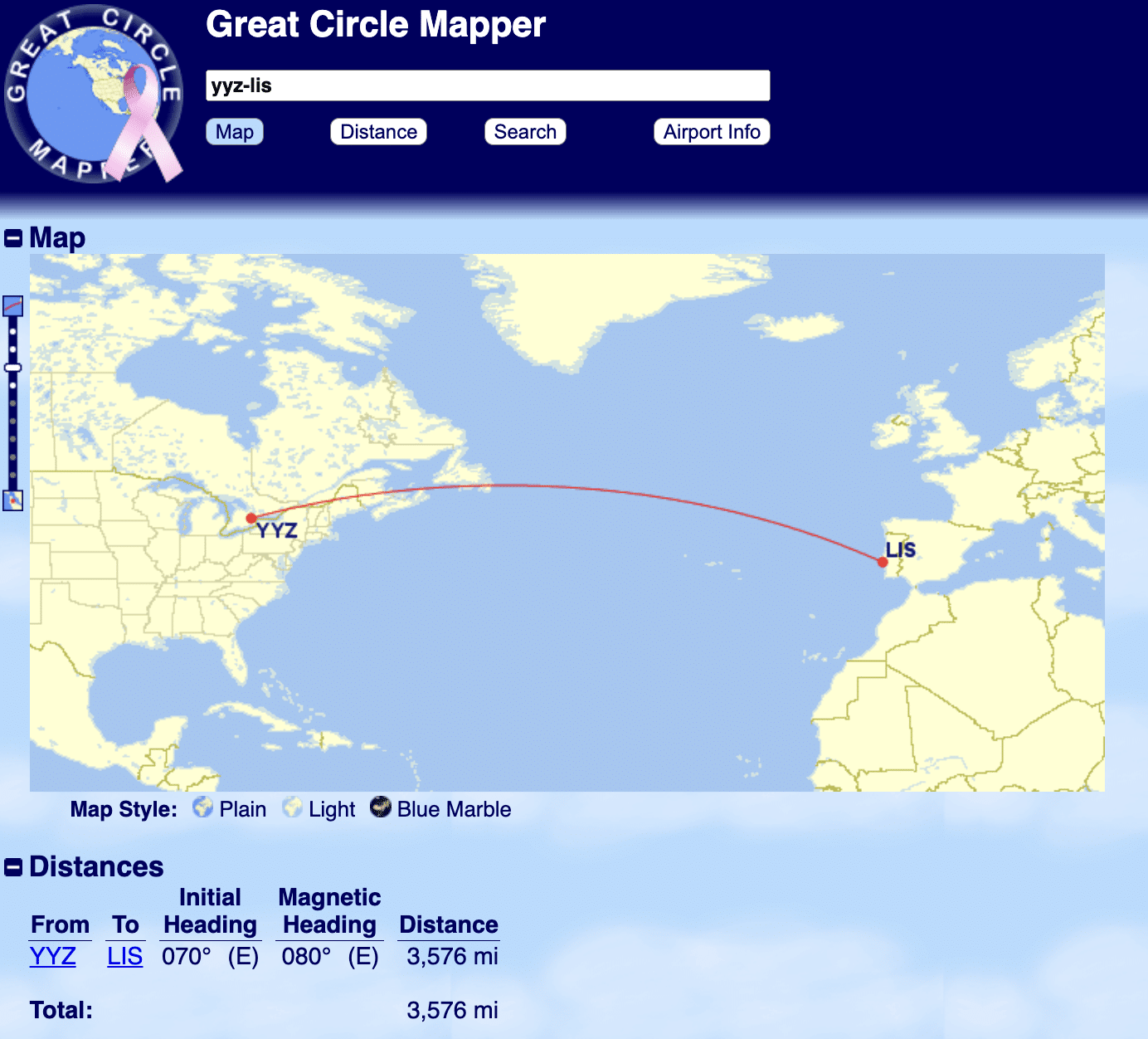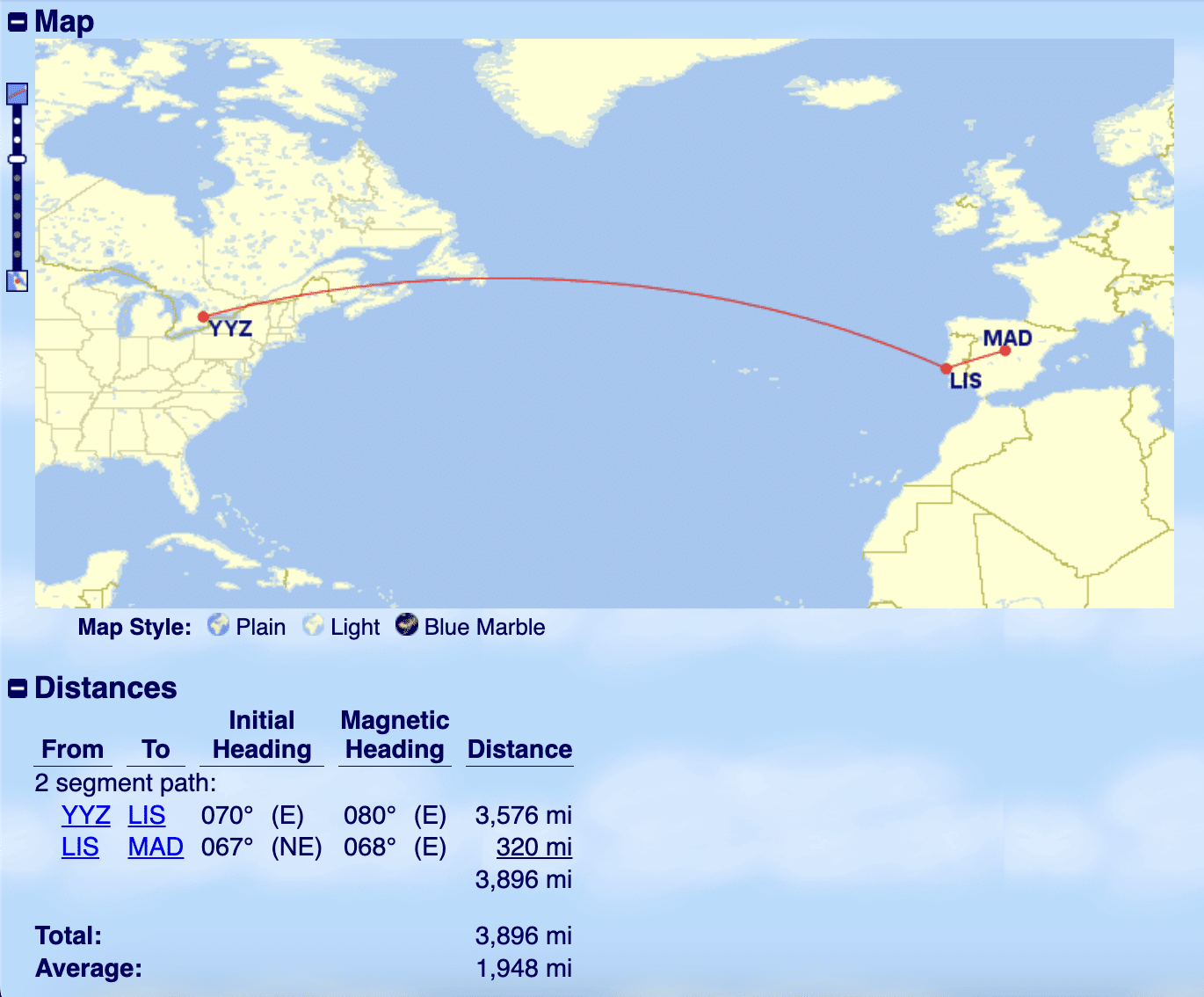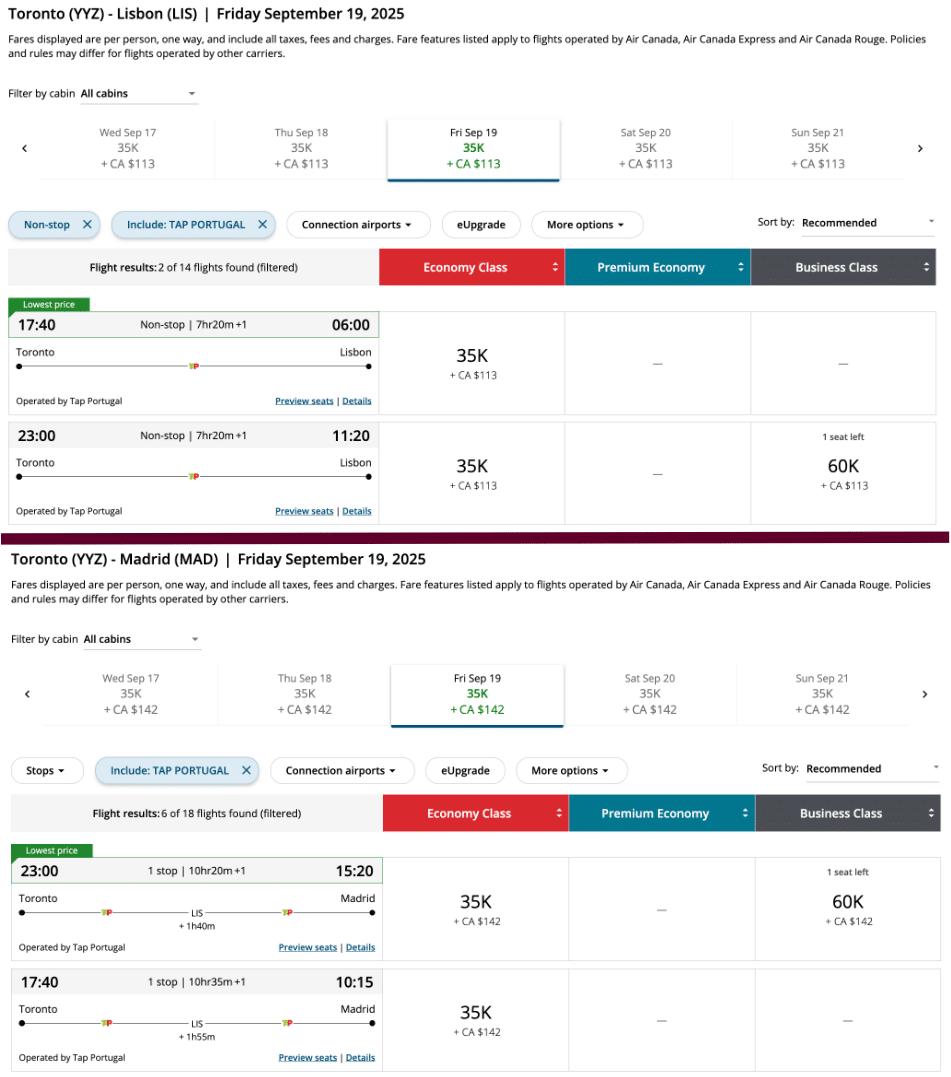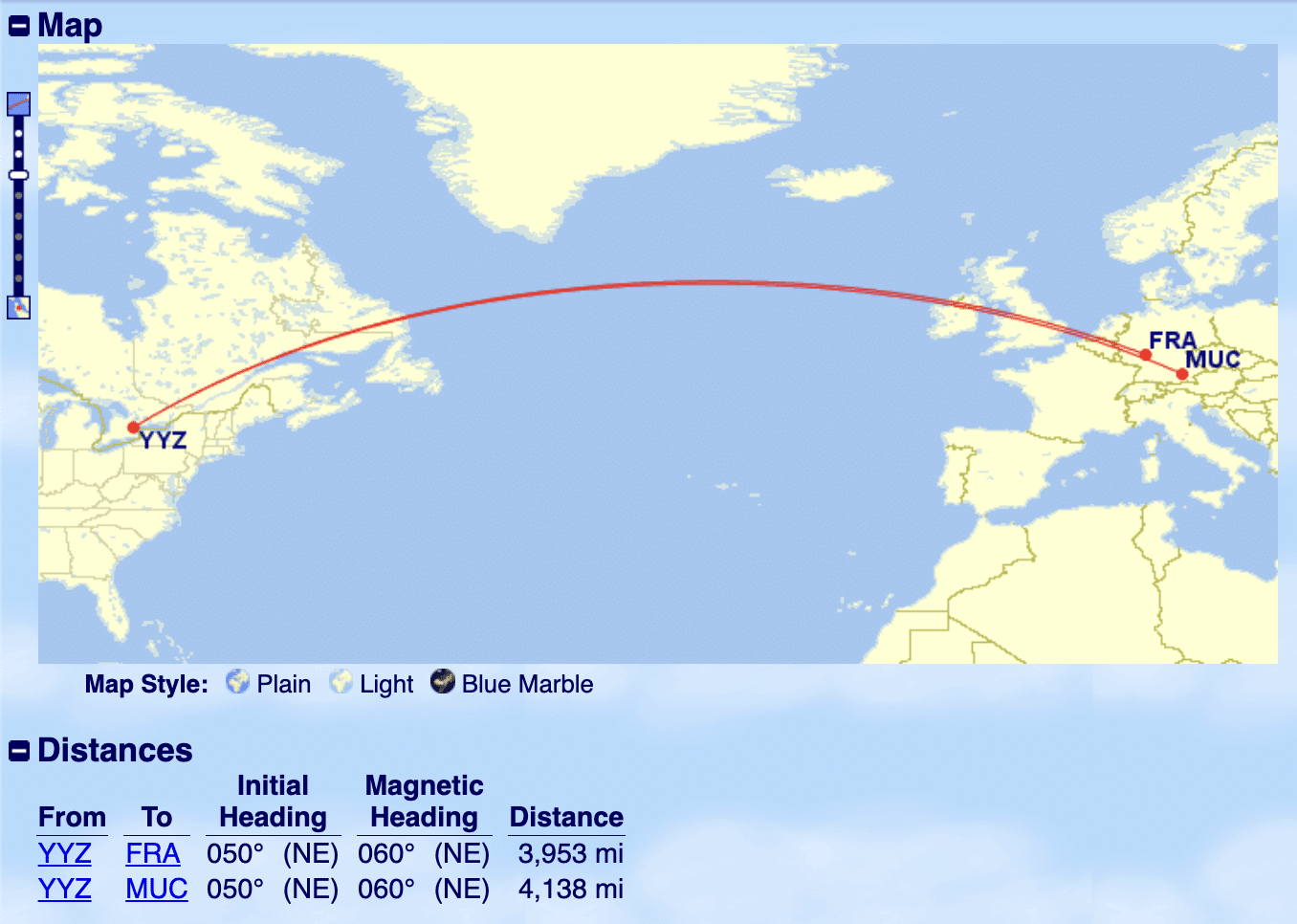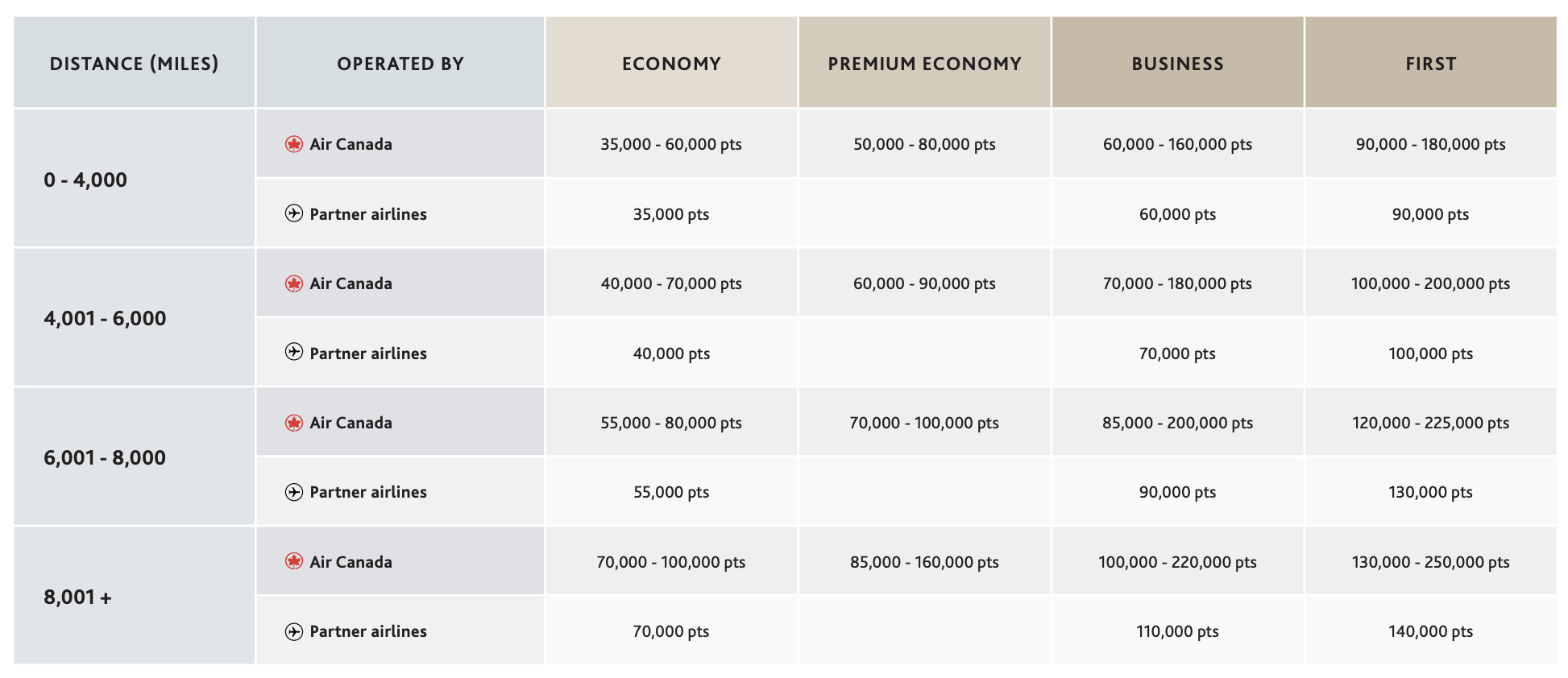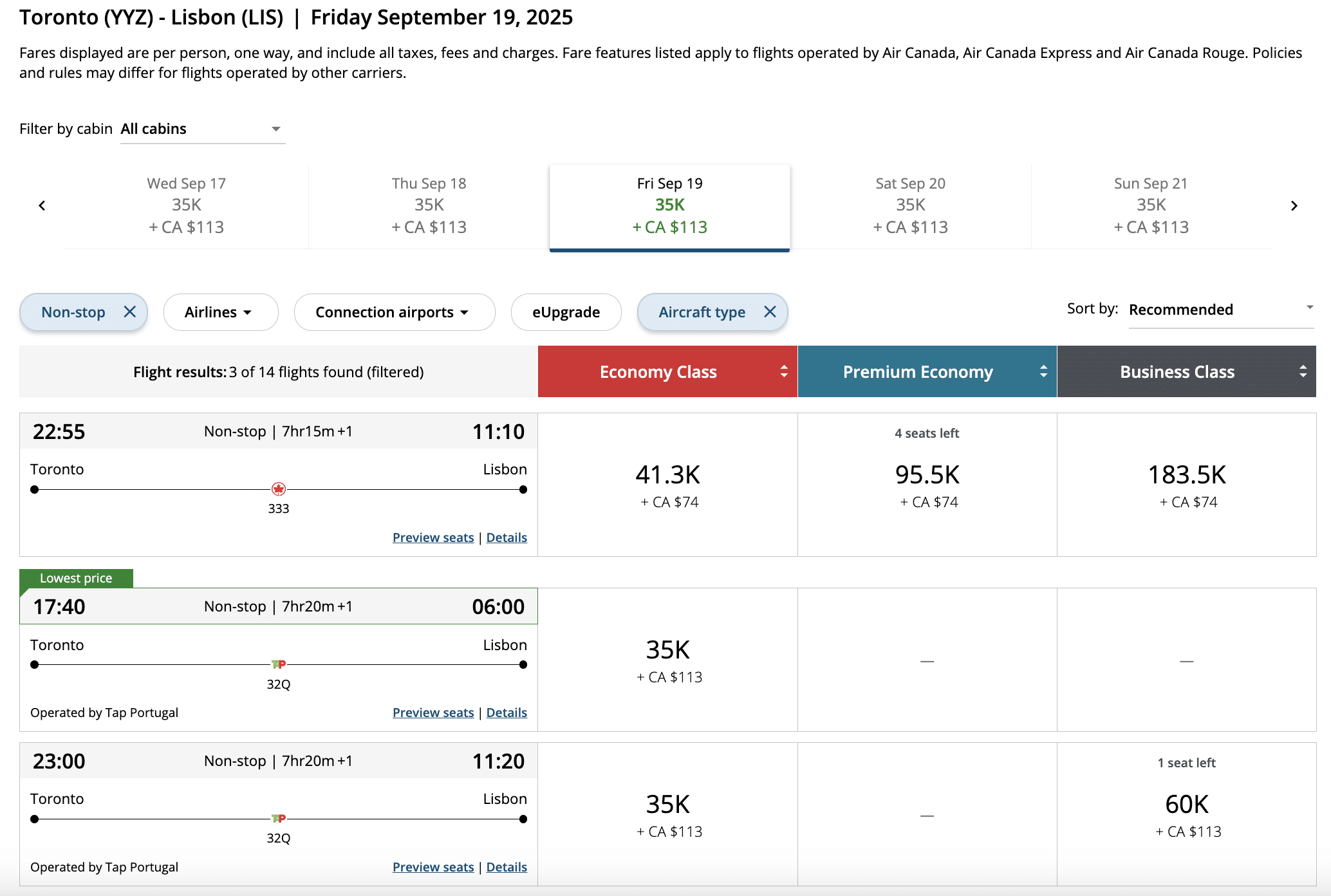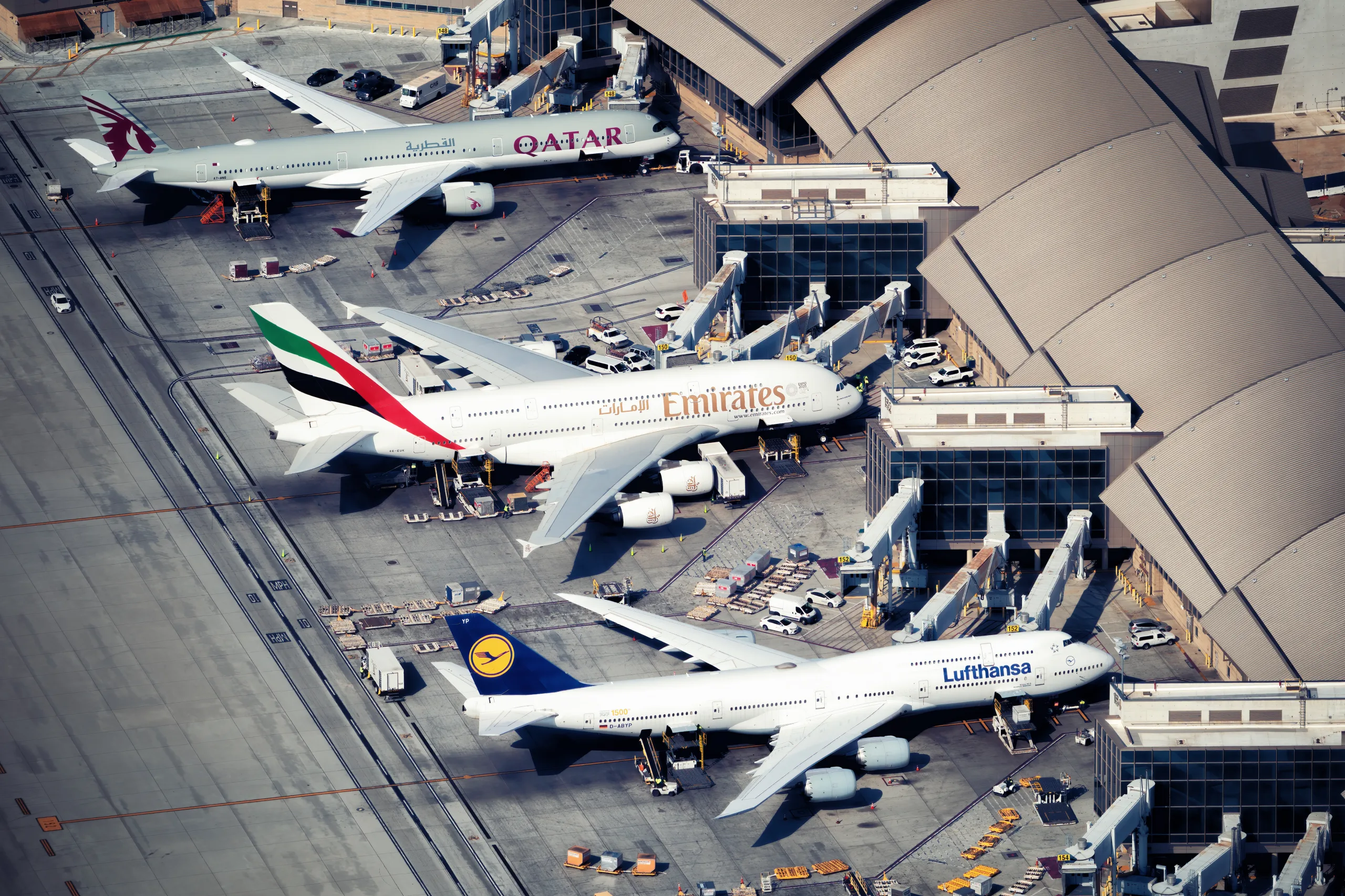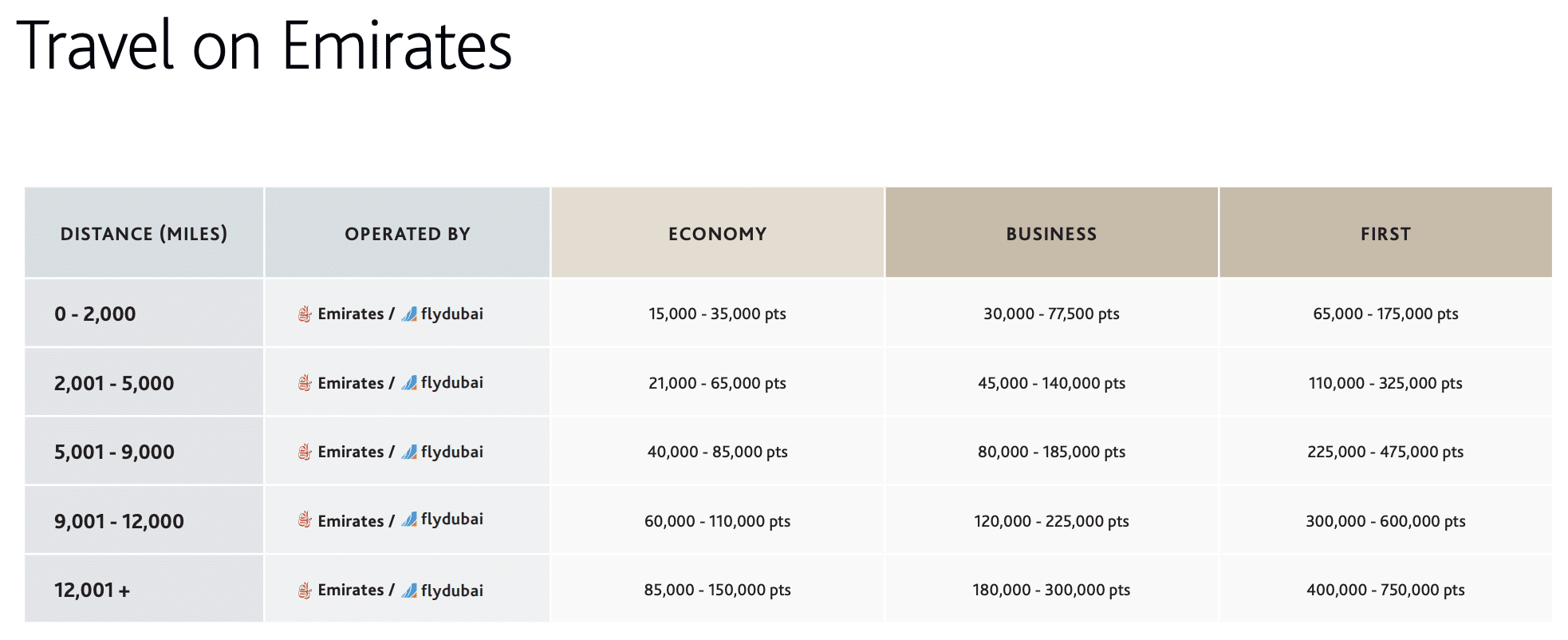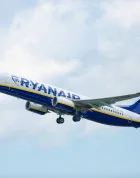Have you ever tried to redeem your hard-earned Aeroplan points and felt lost in the sea of regions, distance bands, and pricing charts?
You’re not alone.
The Aeroplan Flight Reward Chart might seem overwhelming at first, but once you break it down, it’s actually an awesome tool that can help you unlock significant value for your points.
In this post, we’ll dive into the nuts and bolts of the Aeroplan Flight Reward Chart to help arm you with the knowledge you need to book your next adventure with confidence.
Whether you’re new to the world of Aeroplan or an experienced award traveller, this guide will help you get a better idea of travel zones, calculating flight distances, and understanding fixed and dynamic pricing.
Let’s get started.
Flight Reward Chart: Understanding Travel Zones
Aeroplan has divided the world into four main regions.
- North America: Canada, the United States, Mexico, Central America, and the Caribbean
- Atlantic: Europe, Africa, the Middle East, and West, Central, and South Asia
- Pacific: North, East, and Southeast Asia, and Oceania
- South America
Each of these regions has its own reward chart for flights within each region and for flights between each possible combination of regions.
So, in total, there are 10 separate Aeroplan reward charts.
Four for flights within each region:
- Within North America
- Within Atlantic
- Within Pacific
- Within South America
Six for flights from one region to another:
- Between North America and Atlantic
- Between North America and Pacific
- Between North America and South America
- Between Atlantic and Pacific
- Between Atlantic and South America
- Between Pacific and South America
Also, depending on where you’re hoping to travel, it can sometimes be confusing to pinpoint where countries on the border between two regions belong.
This is especially true for countries that sit between the Atlantic and Pacific regions.
After experimenting with Aeroplan’s points predictor tool, it turns out that Nepal and Bangladesh belong to the Atlantic region (as part of South Asia), while Myanmar belongs to the Pacific region (as part of Southeast Asia).
Now that we have an understanding of the travel zones, let’s dive in further to understand how Aeroplan redemptions are priced in relation.
Understanding Distance Bands
The key to unlocking the best value from your points lies in understanding the distance bands.
Each of the 10 reward charts mentioned above are further broken down into different distance bands, which help calculate the number of Aeroplan points required for your flight.
Aeroplan uses a distance-based pricing model, meaning that the farther you fly, the more points you’ll typically need.
For example, here is a reward chart showing different distance bands for flights between North America and the Atlantic zones. (The number of distance bands and the mile ranges for each band vary depending on the travel zone(s), and you can find all 10 reward charts on the Aeroplan website.)
The chart is quite straightforward.
Starting from the leftmost column, it displays the range of miles for each category.
For example, the first category is 0–4,000 miles, meaning that any flight route with an origin and destination city that are 4,000 miles or less apart will fall into this category.
The question is, how do you calculate the distance between your origin and destination?
There are several ways to do this, and we’ll go over them in order from easiest to most advanced.
Aeroplan’s Predictor Tool
The easiest way to calculate the distance of your flight is by using Aeroplan’s Predictor Tool. In fact, you don’t even need to manually find the distance as the tool automatically calculates it in the backend and displays the number of Aeroplan points required for that route.
For example, if you’re planning to fly from Toronto to Lisbon and want to figure out how many points are required, simply head over to the predictor tool and input the origin airport (Toronto) and destination airport (Lisbon).
While this method is simple and intuitive, the information given from the results screen may not be enough if you’re building a trip with a stopover, or if you’re simply wanting to maximize the value of your points.
To dive in further, let’s move on to the next tool.
FlightConnections
The next tool that comes in handy when figuring out the flight distance is FlightConnections.
This trip-planning tool is useful for finding out which airlines or alliances operate between any two airports while also showing the distances and flight schedules. It’s particularly helpful if you’re trying to see what flight options exist for specific routes.
Let’s head over to FlightConnections and search for the same example route from above: Toronto (YYZ) to Lisbon (LIS).
On the left side, we can see the distance for this route and the estimated travel time. Below that, the tool displays the airlines that offer non-stop flights on this route along with their schedules.
For the Toronto to Lisbon route, we can see that the distance is about 3,565 miles, and the flight takes approximately 7 hours and 20 minutes. Additionally, three airlines – Air Canada, Air Transat, and TAP Portugal – operate non-stop flights on this route.
With this information, we can conclude two things:
- This route falls under the first distance band for a North America–Atlantic flight reward chart (0–4,000 miles).
- We can book a partner airline (TAP Portugal, since it’s part of Star Alliance) as long as award availability is present.
Therefore, FlightConnections provides a more detailed picture of what to expect during your flight searches with Aeroplan, helping you to make more informed decisions.
Great Circle Mapper
Lastly, if you’re an experienced points traveller looking to build a complex itinerary and truly maximize the value of your points, Great Circle Mapper is the ultimate tool. It provides the most accurate and detailed information about the exact distance between two points, making it ideal for planning multi-stop trips and fine-tuning your route to fit within a specific distance band.
Again, using the same example route of Toronto to Lisbon, we’ll simply type in “YYZ-LIS” and hit search. (Yes, you need to be a travel nerd and use the airport codes.)
Great Circle Mapper will then display a map showing the path between the two airports, along with the exact distance. In this case, the distance between Toronto and Lisbon is 3,576 miles.
You may be wondering, what’s the difference compared to the previous two tools?
Well, this is where the fun starts.
Recall that the first distance band is between 0 and 4,000 miles. This means we still have an additional 424 miles to work with before exceeding the first distance band (given the Toronto to Lisbon flight distance of 3,576 miles) – thus allowing us to potentially travel farther without using more points.
For example, we could continue our journey to Madrid from Lisbon and still keep the total distance under 4,000 miles, all while staying within the same distance band for the same number of points, as long as we can find availability with partner airlines.
This allows you to get creative and consider having a quick visit to Lisbon for some Portuguese egg tarts or travelling to both cities for the price of one. (Note that there is an additional cost of 5,000 Aeroplan points for stopovers of more than 24 hours.)
The same amount of points are required whether your destination is Lisbon or Madrid.
Here’s another example.
Let’s say you’d like to visit Munich for Oktoberfest. The distance from Toronto to Munich is 4,138 miles, which falls into the second distance band of 4,000–6,000 miles. According to the reward chart, this route will cost 40,000 Aeroplan points on a partner airline (Lufthansa in this case, and we’ll talk in more detail about pricing in the next section).
However, what if you only have 35,000 points, and are now feeling disappointed and about to scour the internet for discount codes on cash fares in the hopes of snagging a 5% discount?
Rather than give up on the redemption options altogether, why not consider flying to Frankfurt instead, since this route falls into the first distance band?
The distance from Toronto to Frankfurt is just under 4,000 miles (3,953 miles to be exact), placing it in the first distance band, and allowing you to book a flight on a partner airline for 35,000 Aeroplan points.
From there, you can continue your journey to Munich on a fairly affordable domestic flight or by hopping on a high-speed train.
As you can see, Great Circle Mapper becomes incredibly useful when you get creative with building your flight routes.
By understanding how much distance you have to work within each distance band, you can craft itineraries that allow you to visit multiple cities for the same amount of points or find better value by adjusting your destinations.
Whether it’s squeezing in a stopover or tweaking your route to stay within a lower distance band, this tool is an essential asset for any points-savvy traveller.
Understanding Pricing
Now, let’s jump back to the reward chart to further understand how Aeroplan pricing works, and explore the differences between dynamic and fixed pricing models.
The second column of each flight rewards chart divides each distance band by operating airline: either Air Canada or partner airlines.
As you might expect, this distinction is made because Air Canada flights are priced using a dynamic pricing model while partner airlines follow a fixed pricing model.
The next four columns of the chart display the amount of Aeroplan points required to fly a route in this distance band, depending on the cabin, separated as follows:
- Economy
- Premium economy
- Business class
- First Class
(Note that the number of points displayed are for one-way travel.)
Additionally, there is a separate reward chart for Emirates and flydubai, making for a total of three different pricing mechanisms.
Let’s take a look at them one by one.
Fixed Pricing
Partner airlines like All Nippon Airways (ANA), Lufthansa, and Turkish Airlines operate on fixed reward pricing with Aeroplan, and you can find a full list of Aeroplan partner airlines on their website.
Fixed-pricing for redemptions means that as long as there’s award availability, the number of points required for your flight remains the same regardless of demand. If you can snag these flights, you’re getting great value from your points.
Using the Toronto–Lisbon flight example again, you can book an economy flight for 35,000 Aeroplan points or a business class flight for 60,000 points.
However, it’s generally more difficult to find availability for partner airline flights. Fewer award seats are released for partner airlines compared to the number of seats released for Air Canada flights, and even when they are released, they often get snapped up by savvy travelers almost instantly. Great deals don’t last long.
There are tools like Roame that make award searches easier and let you set up alerts, but they can be quite complex to use and often require a paid subscription; however, if you have a strong desire to experience luxury cabins and you’re willing to put in the time and effort to learn these tools, it will significantly increase your chance of securing them.
Dynamic Pricing
Air Canada flights operate on a dynamic pricing model, which means that the number of points needed for any given award flight changes based on the cash price of the ticket. As you can see on the reward chart, it displays an approximate range of points required for each distance band.
If you book early or during low-demand periods, you’re more likely to find flights that cost closer to the lower end of the dynamic range.
However, during peak travel times, prices may soar, and it’s more likely you’ll see costs near the upper threshold, or even higher.
Dynamic pricing is a double-edged sword in that you may score a low-points-required flight during off-peak travel seasons, but booking last-minute flights or travelling in peak season can quickly drain your points balance.
As a general rule, if you’re quoted closer to the lower limit of the price range, you’re getting a good deal. On the other hand, if the price is at or above the upper threshold of the dynamic spectrum, you’re not getting as much value for your points.
Again using the Toronto–Lisbon example from above, we would expect the price range for Air Canada flights to be in the following ranges:
- Economy: 35,000–60,000 Aeroplan points
- Premium economy: 50,000–80,000 Aeroplan points
- Business class: 60,000–160,000 Aeroplan points
In our example search results above, we see the following prices:
- Economy: 41,300 Aeroplan points
- Premium economy: 95,500 Aeroplan points
- Business class: 183,500 Aeroplan points
Based on this information, we can evaluate whether we’re getting a good value from our points by booking this Air Canada flight.
For Economy, 41,300 points is quite close to the lower limit of the range, meaning that this is a decent deal – though booking with TAP Portugal for 35,000 points clearly offers better value.
For Premium economy, 95,500 points is above the upper limit of the price range, meaning that it’s not such a good value.
For business class, 183,500 points is also above the upper limit of the price range, meaning that it’s not a great deal – especially when you can book a business class seat with TAP Portugal for less than one-third of the cost in this example.
Therefore, the key to maximizing your Aeroplan points is to plan early and strategically in order to secure partner airline flights.
Emirates/flydubai Pricing
Finally, there is a special chart for both Emirates and flydubai, both airlines that Aeroplan added through unique partnerships.
The reward chart for these airlines operates similarly to the dynamic pricing model used for Air Canada. However, the key difference is that the Emirates and flydubai chart is solely based on the distance flown, without dividing the world into travel zones.
When redeeming points for these airlines, you might encounter higher or lower rates depending on the route, and award availability can be hit and miss.
In short, this chart is trickier to navigate, but the potential for unique, luxury travel experiences, such as flying Emirates First Class, makes it worth exploring.
Conclusion
Understanding the Aeroplan Flight Reward Chart is crucial for anyone looking to get the best value out of their Aeroplan points. The program has plenty of opportunities to stretch your points when you understand how to leverage the regions, distance bands, and various pricing models.
Whether you’re booking a short-haul hop to New York or a long-haul flight to Asia, learning the ins and outs of the chart can make all the difference in your travel experience.
So, the next time you’re planning a trip, remember to refer back to the Aeroplan Flight Reward Chart (as well as this guide), play around with the regions and distance bands, and most importantly, don’t procrastinate to book award flights when you find a great redemption opportunity.


